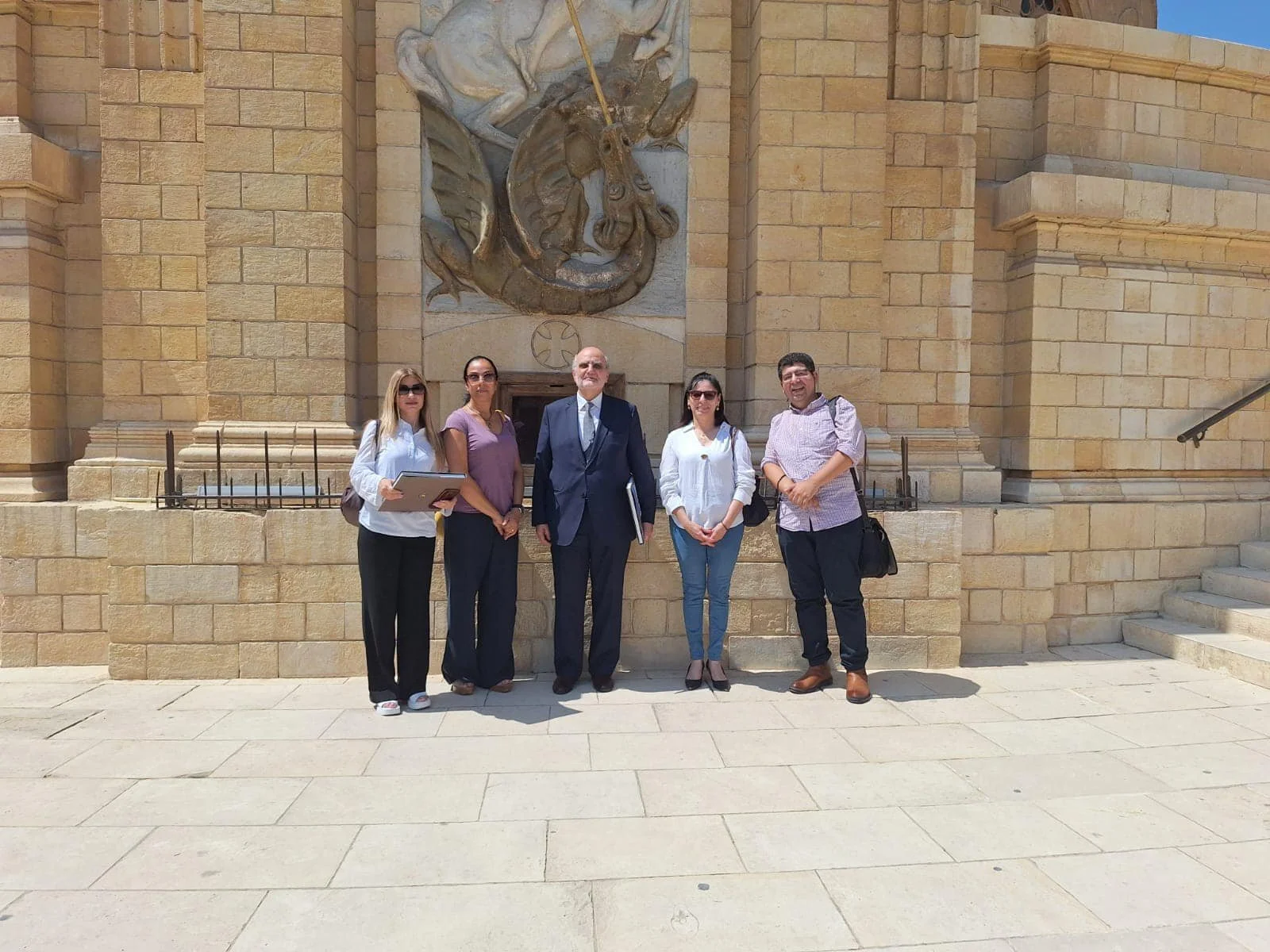An Overview About the Greek Orthodox Patriarchal Monastery of St. George in Ancient Egypt, Affiliated to the Greek Orthodox Patriarchate of Alexandria and All Africa
Cairo, July 14, 2024
By: The Journalist Lea Adel Maamary
Attention is drawn to the Patriarchal Monastery of St. George in Ancient Egypt, located in the Babylon region, which took its name after the settlement of Babylonian prisoners who were brought to Egypt by Pharaoh Ramesses I.
This area is located about five kilometers South of Central Cairo, and opposite the Giza Pyramids. Today, it is one of the most densely populated suburbs of Cairo, which includes many Monasteries, places of worship, and cemeteries.
It is called Ancient Egypt, and the Monastery is a very majestic edifice, and because of it the neighborhood was given the name of the Monastery “St. George.” The Roman fort of Babylon on which the Monastery was established was mentioned in the books of the historian Strabo and other writers.
In the first centuries, this fort protected the entrance to the canal that reached the Red Sea, and the construction of the area is mainly associated with Emperor Trajan, while the fort itself dates back to the time of Diocletian.
In one of the two gigantic towers in the North, a catholicon was built for the Greek Orthodox Monastery of the Patriarchate of Alexandria and All Africa, dedicated to the honor of the Saint and the Great Martyr George, the Saint who, according to Holy Tradition, confessed his faith in the true God in Babylonia, Egypt, where he was imprisoned and tortured.
Holy Tradition also confirms the passage and stay of the Holy Family for a long time in Babylon, Egypt, where the Well of the Virgin Mary is still a “fountain of healing” in the Church of the Virgin Mary within the Monastery’s cemeteries.
In the fourth century, the process of using the fort for worship began a gradual increasing trend, and the matter reached its peak when the use of the fort as a military building was stopped at the end of the fifth century.
There are also manuscripts confirming the existence of the Monastery of St. George, dating back to the fourteenth century, and the Nilometer that is still present at the base of the tower confirms the existence of the fort. The Nilometer was used to determine the amount of taxes due to the direct relationship between annual fluctuations in production and those of the Nile’s flow. There are also manuscripts confirming that the Monastery, at different periods throughout the ages, was also used as a school, orphanage, hospital, and other charitable and educational institutions.
The graves of the recent martyrs Gabriel and Kermedoli, which are located inside the Monastery, are another living testimony to the existence of the Monastery for centuries. It is worth mentioning that that many Saints were martyred in the year 1522 during the pontificate of the Greek Orthodox Pope and Patriarch St. Joachim. Noting that Saint Nicodemus of Athos and the Patriarch of Alexandria Theophilos II, wrote and documented the lives of these Saints.
As for the Monastery, it is a spiritual oasis, not only for the Greek Orthodox, but also for the Coptic Orthodox, Catholics, and all Christians and Muslims as well. People from all over Egypt and the world visit it to pray before the miraculous icon of St. George, which was miraculously preserved from the fire that burned the Catholicon of the General Monastery in 1904.
The majestic Church that exists today, also known as the “Rotunda of the East,” was then rebuilt on the three floors Roman tower during the reign of the late Patriarch of Alexandria Photius, in the early twentieth century. Today, it is one of the most important religious Shrines in the Land of the Nile.
Regarding the modern history of the Monastery, it saw against light, as in the history of the first Christian centuries in Old Cairo, in the year 2015 when the doors of the Holy Monastery’s Catholicon were reopened and all the facilities inside the fortress were opened, as well as after everything was completely restored with the grace of God and with the blessing, care and inspiration of His Beatitude and Holiness the Pope and Patriarch of Alexandria and All Africa, Theodoros II, and with a donation from the great philanthropist Athanasios Martino.
In addition to the importance of saving and restoring the Holy Monastery, which is the eternal symbol of the Patriarchate, these works also have a special symbolism. They constitute multifaceted cooperation between the Greeks and Egyptians in many fields, as Muslims and Christians combined their efforts, under the guidance of the Pope and Patriarch Theodoros II, to restore a place of worship and the fort in which St. George was imprisoned.
The process of work and spiritual struggle continues, and St. George, the Patron Saint of Christians, remains a leader and protector of the weak. The Monastery of St. George in Ancient Egypt remains a unique building in the East, and a monument of encounter of great civilizations. It is also a monastic oasis for Orthodoxy that continues its journey through the ages...
























